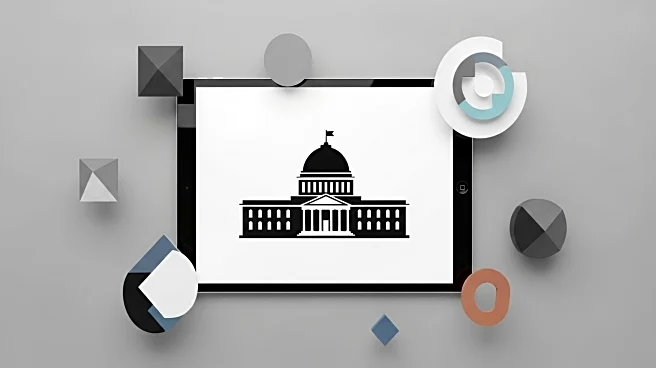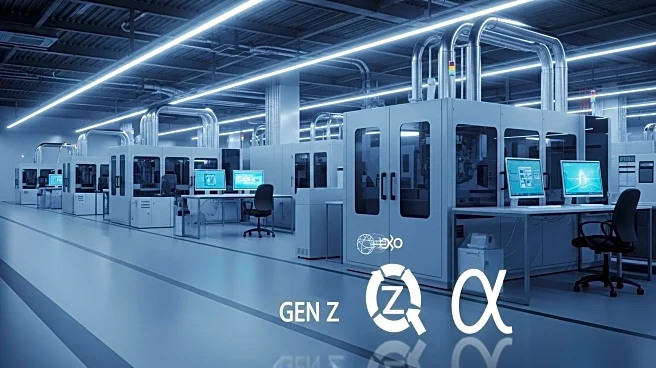What's Happening?
The Department for Science, Innovation and Technology (DSIT) has increased its staff numbers by more than 50% following the transfer of the Government Digital Service (GDS) from the Cabinet Office. The department now employs 3,449 full-time equivalent staff, up from 2,223 a year ago. This increase reflects the integration of GDS, which was formalized in May. The transfer has led to higher payroll costs, with DSIT's total payroll staff cost rising to £23.2 million in June, a 70% increase from the previous year. The government aims to double the number of digital and data experts across departments to reduce reliance on contractors.
Why It's Important?
The expansion of DSIT's staff highlights the government's commitment to enhancing digital and data capabilities within public services. By integrating GDS, DSIT aims to streamline operations and improve efficiency, potentially leading to cost savings for taxpayers. The move reflects broader efforts to modernize government functions and leverage technology for better service delivery. The increased staffing and investment in digital expertise may drive innovation and improve public sector performance, impacting how government services are developed and delivered.
What's Next?
DSIT is expected to continue expanding its digital and data capabilities, incorporating additional units such as the Central Digital and Data Office and the Geospatial Commission. The department's focus on digital transformation may lead to further investments in technology and infrastructure. As DSIT grows, it may explore new initiatives to enhance public service delivery and improve government-wide cyber operations. The integration of GDS and other units will likely result in ongoing adjustments to staffing and resource allocation.
Beyond the Headlines
The transfer of GDS to DSIT represents a strategic shift in how the government approaches digital services and data management. It underscores the importance of building internal expertise to reduce dependency on external contractors, potentially leading to more sustainable and cost-effective solutions. The move may also influence how other government departments approach digital transformation, setting a precedent for integrating technology into public sector operations.











